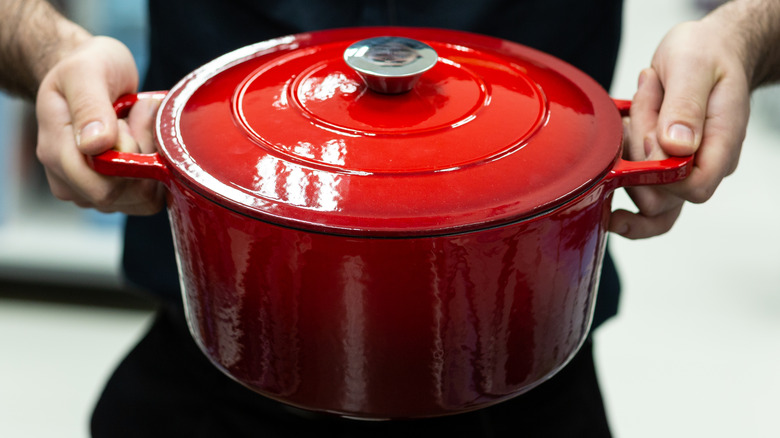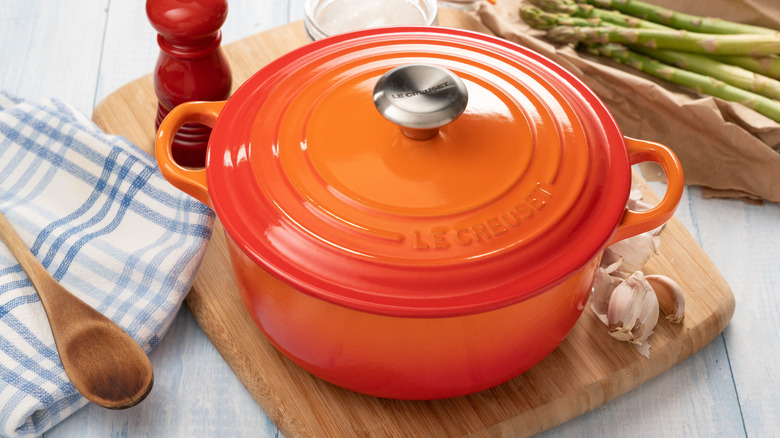Why Quality Dutch Ovens Are So Expensive
A good Dutch oven is a kitchen workhorse, capable of everything from searing and slow-braising a lamb stew, to baking bread and simmering soups. But if you've ever shopped for one, you've probably noticed the price tag can be ... hefty. So, why are high-quality Dutch ovens so expensive?
The answer comes down to a blend of materials, craftsmanship, and longevity. Most Dutch ovens are made of a proprietary mix of cast iron or steel, and are often coated in layers of colorful enamel. Cast iron is excellent at retaining and evenly distributing heat; obviously wonderful properties for any recipe that requires consistent cooking temperatures. But creating uniform cast iron cookware requires high-end raw materials and hands-on quality control — neither of which come cheap.
Then there's the enamel coating; part of what makes Dutch ovens so pretty and fun to collect. But applying that enamel isn't as simple as slapping on a coat of paint. Just like fine pottery, it requires multiple coatings and workers' precise attention to details. You also need to factor in where these Dutch ovens are produced. If they're made in a factory in China (looking at you, Martha Stewart), they'll undoubtedly be cheaper, but you'll likely be sacrificing quality and longevity. If you're wondering if any ovens are made in The Netherlands because of the "Dutch" part of the name, we're sorry to disappoint you. They're actually called Dutch Ovens because an Englishmen popped over there in the 1700s to study the country's superior metal work, and ended up calling his new pot "Dutch" as an homage.
That high cost reflects superior quality
While there are certainly mass-produced Dutch ovens out there, the most expensive brands (like the coveted Le Creuset or Staub) are still largely handcrafted. The two iconic French cookware brands continue to honor their heritage by manufacturing enameled cast iron products in France. At the Le Creuset foundry in Fresnoy-le-Grand, France, for instance, each pot is cast in a unique black sand mold which is destroyed after a single use. Similarly, Staub maintains production north of Paris in Merville, where skilled workers hand-finish each piece. Both brands emphasize craftsmanship, quality, and local expertise, and Le Creuset's exorbitant price tag certainly reflects that.
A high-quality Dutch oven can also be the centerpiece of the kitchen, often stored on the stove, or displayed in a china cabinet as a statement piece, among other clever ways to store cast iron. These substantial pots also carry legacy appeal and sentimental value; for both home cooks and collectors, they're heirlooms, passed down through generations. The high cost reflects that lasting value — it's not just a pot; it's a piece of art, and a symbol of culinary tradition.
The most expensive Dutch ovens cost more because they do more, last longer, and are built with utmost care. From the raw materials to the final enamel coat, every step involves time, skill, and thoughtful engineering. While budget options exist, investing in a quality Dutch oven means you'll own a piece of cookware that will serve you (and likely the next generation) very well.

